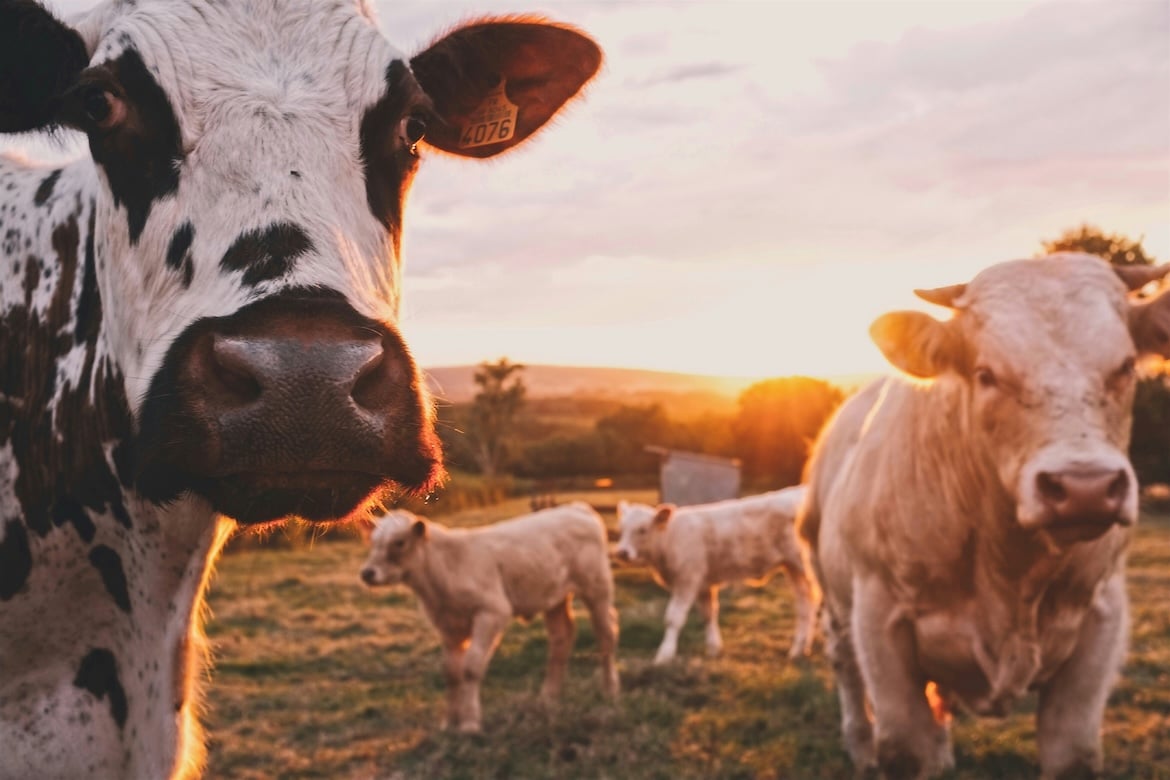This week’s list of top data news highlights covers October 4, 2025 to October 10, 2025 and includes articles on improving AI memory capacity and automating retail reshelving.
Merck Animal Health, the New Jersey-based animal health division of the large pharmaceutical company, Merck, has developed sensor-equipped collars that use AI to monitor the health of dairy cows. Each collar tracks chewing and movement patterns to detect early signs of illness, sending real-time alerts to farmers through a connected app. The data helps farmers treat issues before they worsen, reducing waste and boosting milk production. At some dairies, the system has cut manual checks by over 90 percent.
Quilter, a startup based in Los Angeles, has developed an AI platform that automates the design of electronic circuit boards. Instead of manually mapping thousands of intricate connections, engineers can upload a rough sketch, and the AI system generates a complete, optimal layout guided by principles like heat flow and how electrical signals travel through circuits.
Google has introduced a virtual try-on feature that lets shoppers see how shoes would look on them using their phone camera. Shoppers upload a photo of themselves, and the system overlays selected items from Google’s product listings to show how they would appear when worn. This feature improves user’s shopping experience and reduces uncertainty about how items will actually look when worn.
4. Improving AI Memory Capacity
Supermemory is a San Francisco–based startup that provides a memory API to help AI applications, such as journaling tools, email clients, or video editors, manage and recall information over time. Acting as an external memory layer, it enables AI models to retain and access past context more effectively. The system builds a knowledge graph from unstructured data like a user’s files, chats, or emails after the user connects services such as Google Drive, Notion, or OneDrive. AI apps can query Supermemory for relevant information and instantly surface personalized context across months of data, making them faster, smarter, and more capable of supporting long-term workflows.
5. Turning Livestock Waste into Fertilizer
Researchers at China Agricultural University have built a machine learning system to aid with recovery of phosphorus from livestock manure. Phosphorus is vital for crop growth but is often lost through runoff that pollutes rivers and depletes soil nutrients. The team used a heating process called hydrothermal treatment to separate manure into solids and liquids, then trained machine learning models to predict how phosphorus behaves during treatment. By pinpointing conditions that lock more phosphorus into the solid form, the system helps farms reuse nutrients while reducing environmental harm.
6. Automating Retail Reshelving
Brain Corp, a robotics and AI company based in San Diego, has launched ShelfOptix, a shelf-monitoring service that gives retailers real-time visibility into store inventory. The system uses autonomous robots equipped with cameras and sensors to scan aisles, capture shelf images, and analyze them with computer vision. The robots analyze shelf images, flagging missing or misplaced products, pricing errors, and stock discrepancies.
7. Advancing Irrigation Systems
Researchers from Texas A&M University have developed SomaTech, an AI-powered irrigation system that helps farmers use water more efficiently by combining data from soil sensors, crop types, and weather forecasts. The system’s algorithms determine precise watering schedules, while its integrated biodegradable polymers expand within the soil to store and slowly release moisture. By linking intelligent irrigation control with water-retentive materials, SomaTech reduces evaporation and runoff in drought-prone regions.
8. Defending Drones from Cyberattacks
Researchers at Florida International University have developed SHIELD, a machine learning system that helps drones detect and recover from cyberattacks mid-flight. Unlike traditional defenses that rely only on navigation sensors, SHIELD monitors the drone’s entire control system—from software and battery levels to processor activity—to spot signs of tampering. When it detects an intrusion, it identifies the attack type and triggers a recovery plan, restoring normal flight in less than half a second.
9. Teaching Robots to Move Like Humans
Researchers at China’s National University of Defense Technology have created HumanoidExo, an exoskeleton system that helps robots learn movement by copying humans. A human operator wears the suit, which tracks arm and body motion through wrist sensors and scanners. A humanoid robot uses data from the suit to repeat these actions while an AI model interprets the task. Robots can learn to walk and pick up objects after only a few demonstrations—raising task success from 5 to 80 percent.
Toronto-based Diversys Software has launched Diversys.ai, a new platform that uses AI to help companies manage and recover waste materials more efficiently. The system combines data from across a company’s operations to track how materials move, reduce downtime, and ensure compliance with environmental rules. It also includes an AI assistant called VERA, which analyzes real-time information to predict material volumes, flag problems, and help teams make better decisions.

